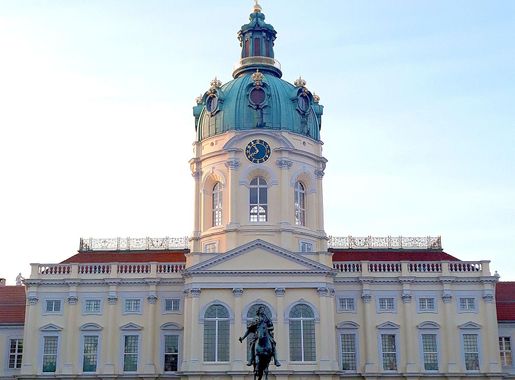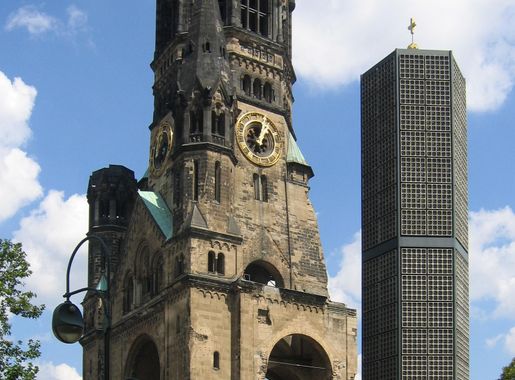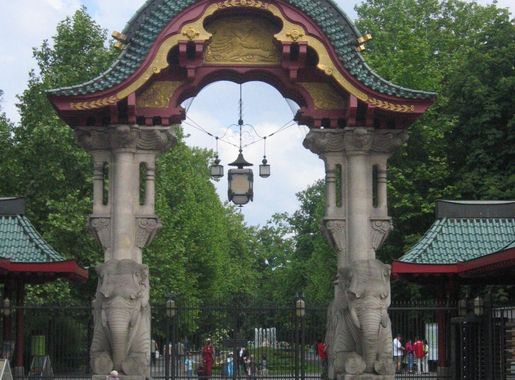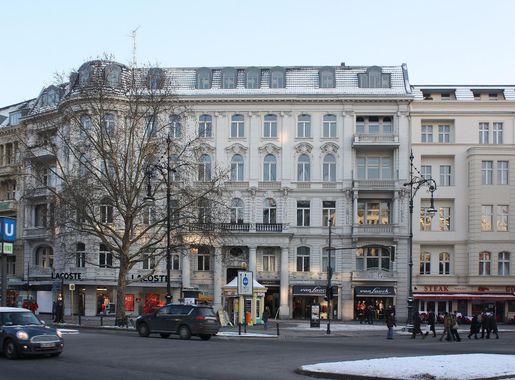
Charlottenburg: Berlin's Timeless Elegance and Modern Charm
Discover Charlottenburg, Berlin: A perfect blend of historical grandeur, modern shopping, and culinary excellence in one captivating neighborhood.
Charlottenburg, located in the western part of Berlin, is a neighborhood that seamlessly blends historical grandeur with contemporary vibrancy. At its heart lies the stunning Charlottenburg Palace, a baroque masterpiece surrounded by lush gardens. This iconic landmark offers a glimpse into the opulent lifestyle of Prussian kings and queens, with its richly decorated interiors and expansive grounds. The palace grounds are perfect for a leisurely stroll or a picnic, providing a tranquil escape from the city's hustle and bustle. Just a short walk from the palace, you'll find Kurfürstendamm, or Ku'damm as the locals call it, Berlin’s most famous shopping boulevard. Lined with high-end boutiques, department stores, and charming cafes, Ku'damm is a shopper’s paradise. The street also boasts impressive architecture, with many buildings showcasing the grandeur of early 20th-century design. For a taste of contemporary art and culture, visit the nearby Museum Berggruen, home to an extraordinary collection of works by Picasso, Klee, and Matisse. Charlottenburg is also a culinary hotspot, offering a diverse range of dining experiences. From traditional German beer gardens to Michelin-starred restaurants, food enthusiasts will find plenty to satisfy their palates. In the evenings, the neighborhood comes alive with a vibrant nightlife scene, featuring everything from cozy pubs to elegant cocktail bars. Whether you're exploring its historical sites, indulging in retail therapy, or experiencing its culinary delights, Charlottenburg promises an unforgettable visit.
Local tips in Charlottenburg
- Visit Charlottenburg Palace early in the morning to avoid crowds and enjoy a peaceful tour of the gardens.
- Wear comfortable shoes for exploring Kurfürstendamm, as the boulevard is extensive and best enjoyed on foot.
- Check out the local markets, such as the Wochenmarkt on Karl-August-Platz, for fresh produce and unique souvenirs.
- Make reservations in advance for popular restaurants, especially during weekends and holiday seasons.
- Utilize Berlin’s efficient public transport to explore other nearby attractions, like the Berlin Zoo and the Kaiser Wilhelm Memorial Church.
Charlottenburg: Berlin's Timeless Elegance and Modern Charm
Charlottenburg, located in the western part of Berlin, is a neighborhood that seamlessly blends historical grandeur with contemporary vibrancy. At its heart lies the stunning Charlottenburg Palace, a baroque masterpiece surrounded by lush gardens. This iconic landmark offers a glimpse into the opulent lifestyle of Prussian kings and queens, with its richly decorated interiors and expansive grounds. The palace grounds are perfect for a leisurely stroll or a picnic, providing a tranquil escape from the city's hustle and bustle. Just a short walk from the palace, you'll find Kurfürstendamm, or Ku'damm as the locals call it, Berlin’s most famous shopping boulevard. Lined with high-end boutiques, department stores, and charming cafes, Ku'damm is a shopper’s paradise. The street also boasts impressive architecture, with many buildings showcasing the grandeur of early 20th-century design. For a taste of contemporary art and culture, visit the nearby Museum Berggruen, home to an extraordinary collection of works by Picasso, Klee, and Matisse. Charlottenburg is also a culinary hotspot, offering a diverse range of dining experiences. From traditional German beer gardens to Michelin-starred restaurants, food enthusiasts will find plenty to satisfy their palates. In the evenings, the neighborhood comes alive with a vibrant nightlife scene, featuring everything from cozy pubs to elegant cocktail bars. Whether you're exploring its historical sites, indulging in retail therapy, or experiencing its culinary delights, Charlottenburg promises an unforgettable visit.
Iconic landmarks you can’t miss
Charlottenburg Palace
Explore the grandeur of Charlottenburg Palace, a stunning baroque castle in Berlin surrounded by beautiful gardens and rich in Prussian history.
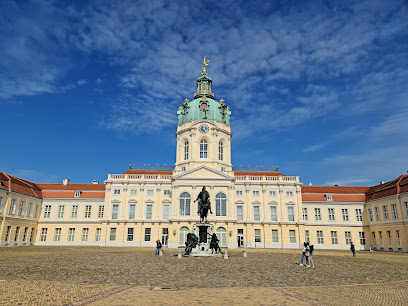
Schlossgarten Charlottenburg
Explore the lush landscapes and historical landmarks of Schlossgarten Charlottenburg in Berlin, a serene escape into nature and culture.
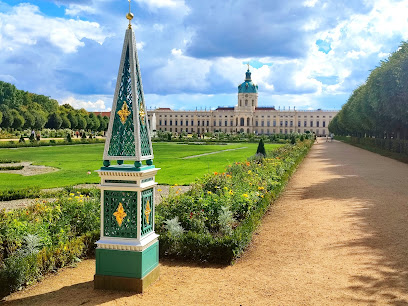
Charlottenburg Palace - New Wing
Explore the majestic Charlottenburg Palace - New Wing, a stunning Baroque gem in Berlin, surrounded by beautiful gardens and rich history.
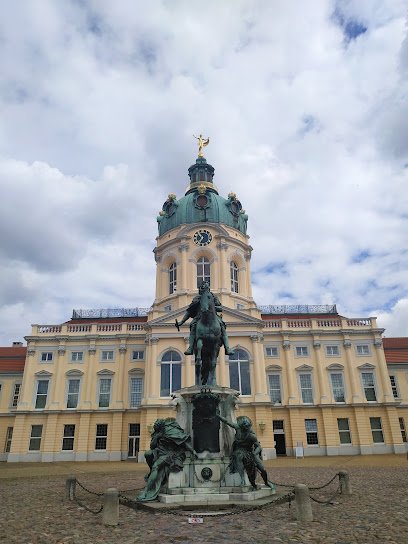
Mausoleum in the Palace Garden Charlottenburg
Discover the serene beauty and historical significance of the Mausoleum in the Palace Garden Charlottenburg, a hidden gem in Berlin's royal heritage.

Mittelpromenade der Schlossstraße am Schloss Charlottenburg
Experience the enchanting blend of history and nature at Mittelpromenade near Schloss Charlottenburg in Berlin, a perfect spot for leisurely strolls and scenic views.
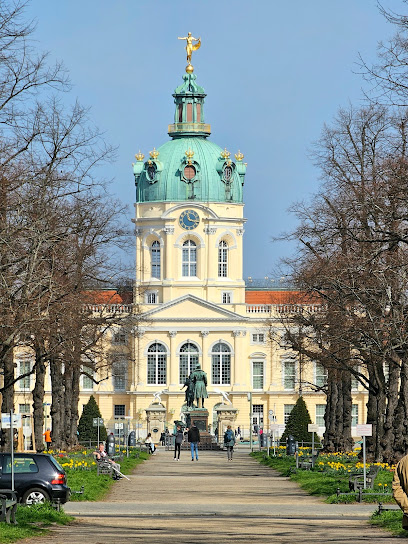
New pavilion in the palace garden of Charlottenburg
Explore the New Pavilion in Charlottenburg Palace Gardens, a stunning historical landmark blending art, nature, and royal heritage in Berlin.
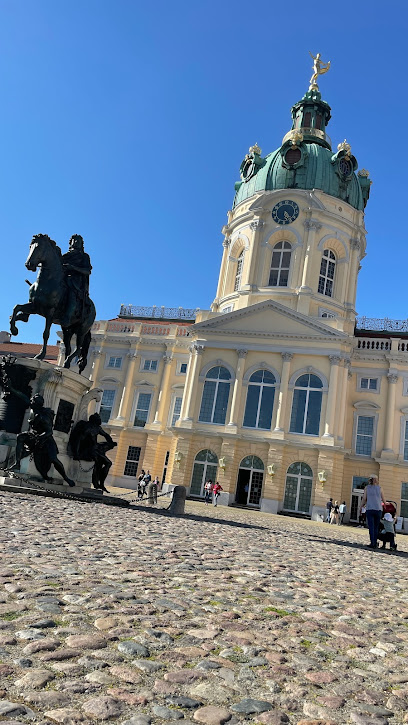
Schlossbrunnen
Experience the charm of Schlossbrunnen, a historical landmark in Berlin, surrounded by picturesque gardens and rich heritage.
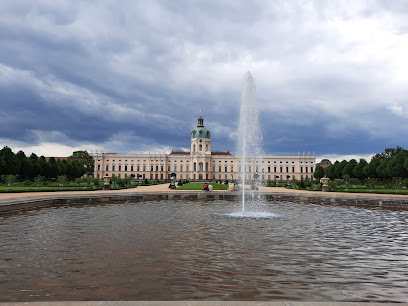
Denkmal des Großen Kurfürsten Friedrich Wilhelm
Explore the grandeur of the Denkmal des Großen Kurfürsten Friedrich Wilhelm, a significant memorial in Berlin’s historical tapestry, showcasing remarkable sculptures and architecture.
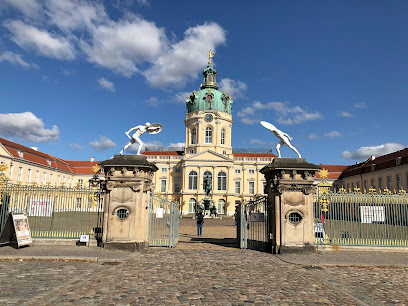
Obelisk
Explore the Obelisk in Berlin, a memorial steeped in history and tranquility, set within the picturesque Charlottenburg-Wilmersdorf district.
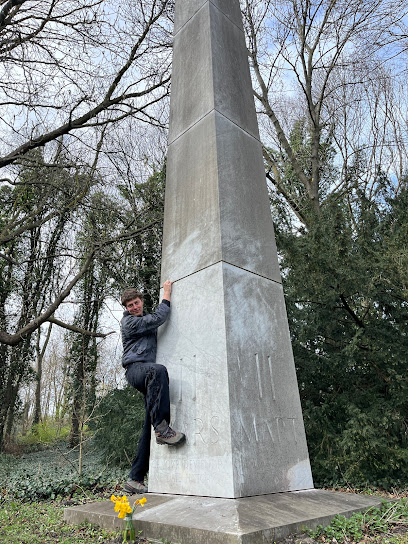
Eingangshäuschen
Discover the charm of Eingangshäuschen in Berlin, a hidden gem with stunning architecture and a rich historical backdrop perfect for every traveler.
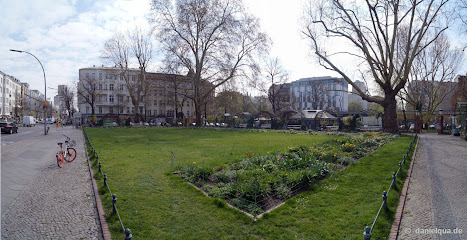
Unmissable attractions to see
Berlin Zoological Garden
Discover the rich biodiversity and conservation efforts at the Berlin Zoological Garden, home to fascinating animals and educational exhibits.

Charlottenburg Palace
Experience the majestic beauty and rich history of Charlottenburg Palace, a premier tourist attraction in Berlin, Germany.

Schlossgarten Charlottenburg
Explore the historical beauty and serene landscapes of Schlossgarten Charlottenburg, a remarkable garden in Berlin perfect for relaxation and discovery.
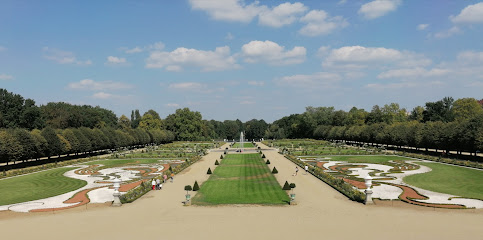
Villa Oppenheim - Museum Charlottenburg-Wilmersdorf
Discover the charm of Villa Oppenheim, a hidden museum in Berlin with a rich art collection and beautiful gardens, perfect for cultural exploration.
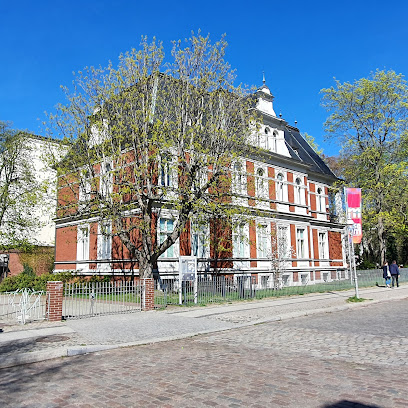
Weltkugelbrunnen Wasserklops
Discover the serene beauty of the Weltkugelbrunnen, a stunning fountain in Berlin's Breitscheidplatz, perfect for relaxation and photography.

Charlottenburg Palace - New Wing
Discover the majestic Charlottenburg Palace - New Wing in Berlin, a historical landmark showcasing royal history and stunning gardens.
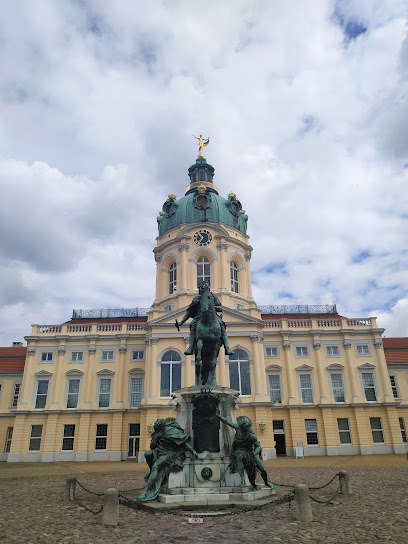
Mausoleum in the Palace Garden Charlottenburg
Explore the Mausoleum in the Palace Garden Charlottenburg, a stunning historical landmark that blends architecture and nature in the heart of Berlin.
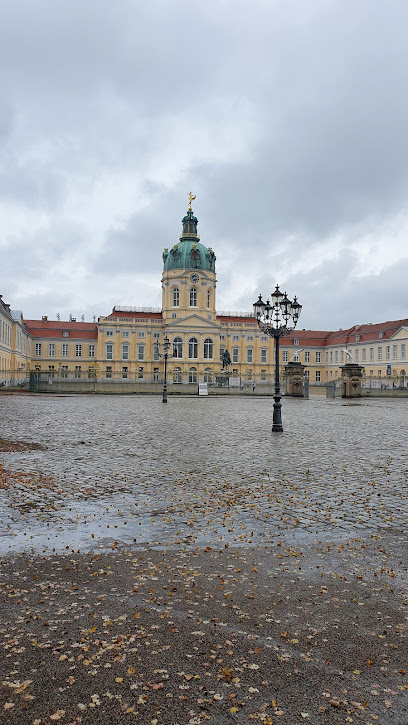
Mittelpromenade der Schlossstraße am Schloss Charlottenburg
Experience the enchanting beauty of Mittelpromenade at Schloss Charlottenburg, a tranquil haven in the heart of Berlin's rich history.

Eingangshäuschen
Discover the charm of Eingangshäuschen in Berlin, a hidden gem showcasing the city's architectural beauty and rich history.
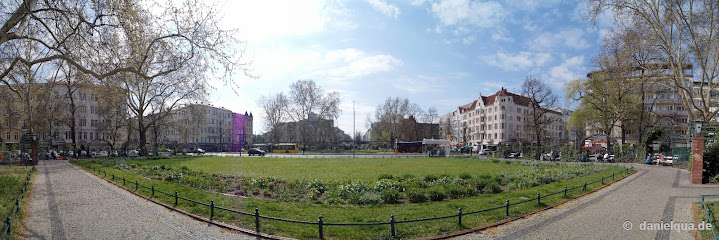
Whale Mural
Explore the stunning Whale Mural in Berlin, a vibrant masterpiece of street art celebrating marine life and creativity in the heart of the city.

Essential places to dine
Dicke Wirtin
Discover Dicke Wirtin in Berlin: A delightful German restaurant offering authentic dishes and warm hospitality in Charlottenburg.
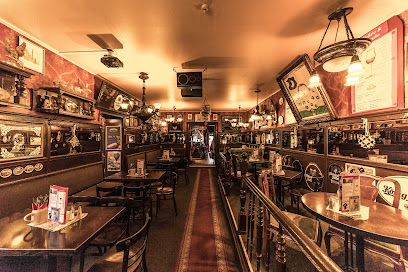
Schnitzelei
Experience authentic German cuisine at Schnitzelei in Charlottenburg - home to delectable schnitzels and delightful tapas!
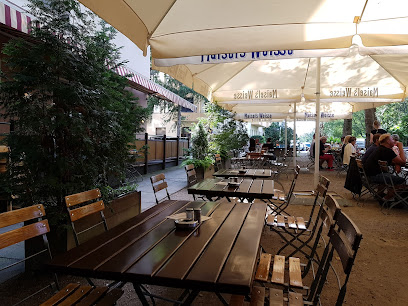
Restaurant Marjellchen
Experience authentic German cuisine at Restaurant Marjellchen in Berlin's Charlottenburg district - where tradition meets taste.

NU RESTAURANT
Experience the best of Asian Fusion at NU Restaurant in Berlin – where culinary creativity meets vibrant flavors in an inviting atmosphere.
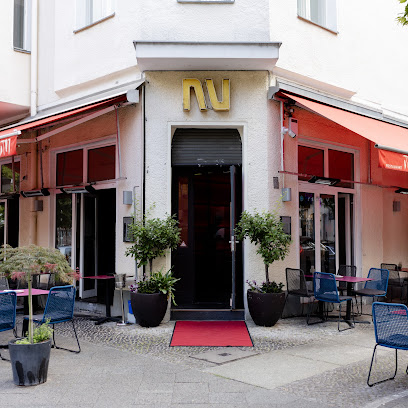
Belmondo
Experience the best of French haute cuisine at Belmondo in Berlin - where tradition meets elegance in every dish.

Focaccino
Experience authentic Southern Italian and Sicilian cuisine at Focaccino, where every dish tells a story of culinary tradition.
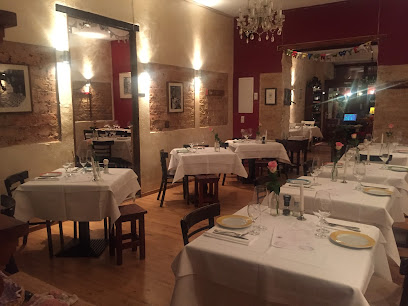
CaliBocca Restaurant & Wine Bar
Experience authentic Italian cuisine and exquisite wines at CaliBocca Restaurant & Wine Bar in Berlin's charming Charlottenburg district.
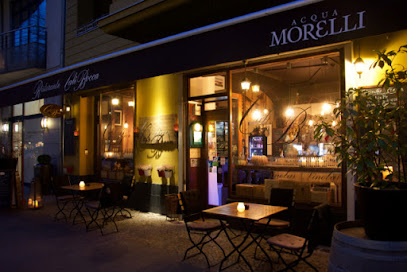
Holly
Experience authentic Chinese flavors at Holly in Berlin's Charlottenburg district - where every dish tells a story.
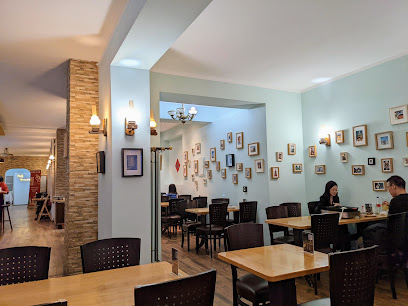
Buschbeck's Restaurant
Experience the essence of German culinary traditions at Buschbeck's Restaurant in Berlin - where every meal tells a story.
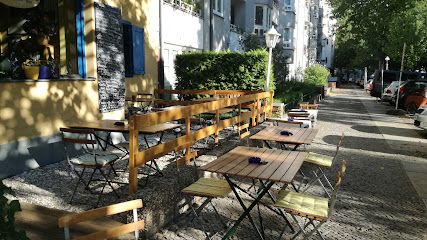
De Maufel
Discover De Maufel: A fine dining experience blending exquisite French and German cuisines in Berlin's charming Charlottenburg-Wilmersdorf district.
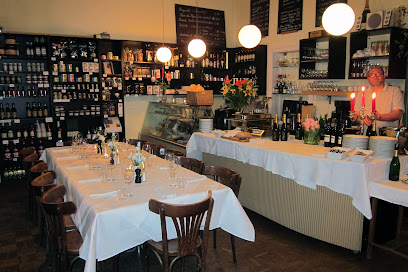
Markets, malls and hidden boutiques
CHANEL BOUTIQUE BERLIN
Discover the elegance of Chanel at the heart of Berlin's luxury shopping scene on Kurfürstendamm.
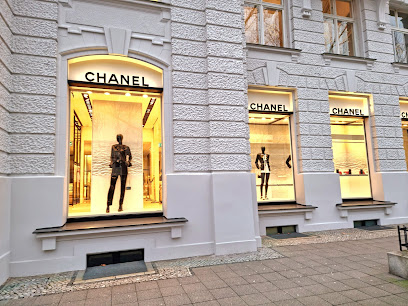
G-Star RAW Store
Explore cutting-edge denim fashion at G-Star RAW Store in Berlin's iconic shopping district, Kurfürstendamm.
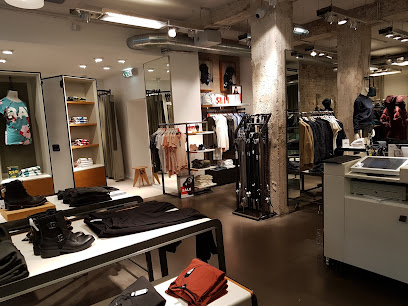
Komm & Sieh - City-Boutique
Explore sustainable fashion at Komm & Sieh - City-Boutique, Berlin's premier destination for unique vintage clothing and accessories.
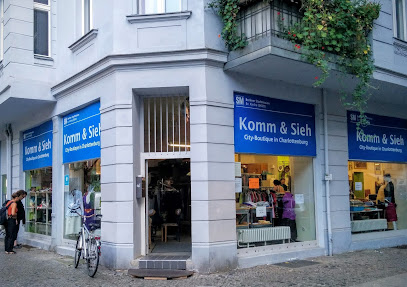
diptyque Boutique Charlottenburg
Discover the luxurious world of fragrances at diptyque Boutique Charlottenburg, Berlin's premier destination for exquisite perfumes and candles.
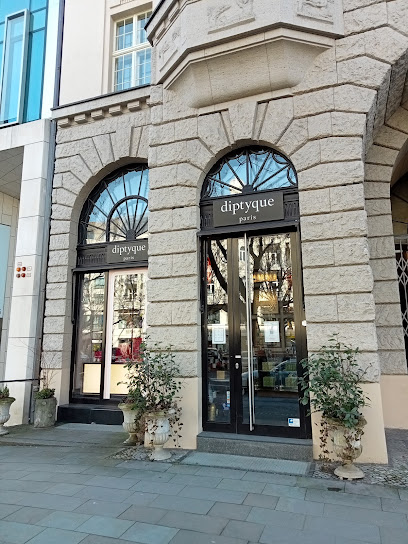
Romans Berlin Concept Store | Baumstamm vor Laden
Explore Romans Berlin Concept Store, a chic boutique offering unique women's clothing and stylish interior decor in the heart of Berlin.
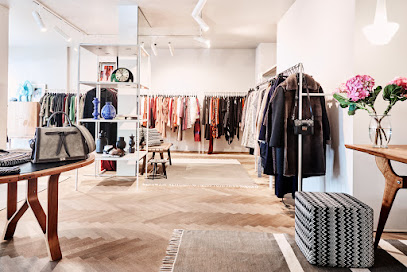
Wolford Boutique Berlin
Explore luxury and elegance at Wolford Boutique Berlin, your go-to destination for exquisite women's clothing, lingerie, and accessories on Kurfürstendamm.
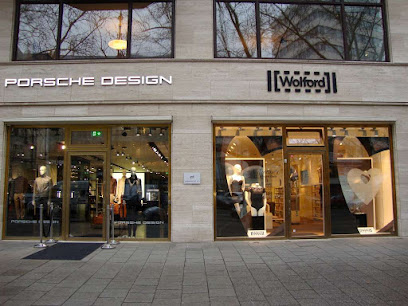
Berlin store at Neues Kranzler Eck
Explore the heart of Berlin's shopping scene at the Berlin Store at Neues Kranzler Eck, your destination for unique souvenirs and local treasures.
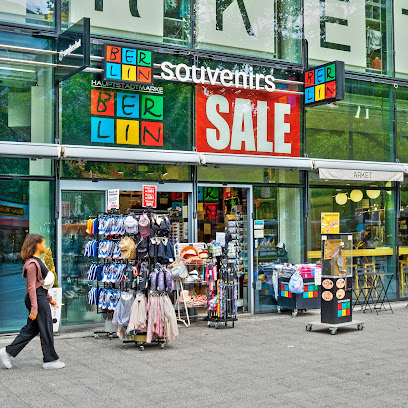
Concept Store - Laden am Kirchplatz
Explore the charm of Laden am Kirchplatz: A unique concept store in Berlin combining gifts, fashion, floristry, and a cozy cafe experience.
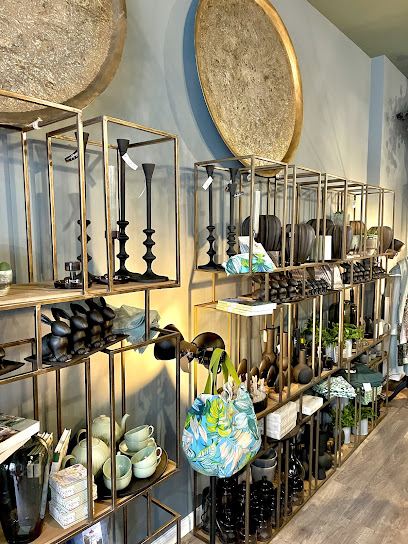
Voila Boutique Berlin
Discover unique gifts, artisanal chocolates, and stunning floral arrangements at Voila Boutique Berlin, a charming destination for all your shopping needs.
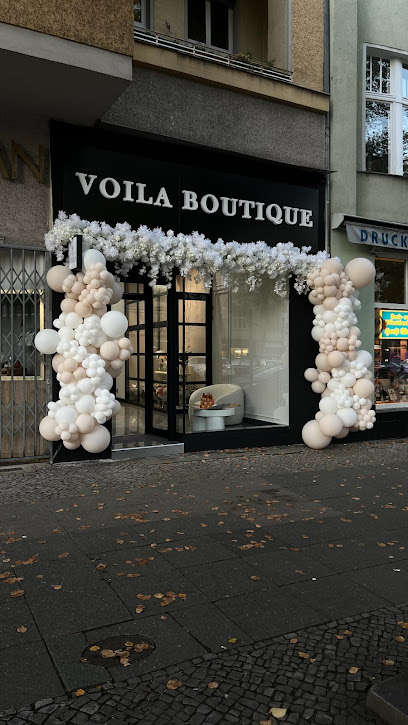
B & T Shop
Discover Berlin's charm at B & T Shop, a hidden gem for unique gifts and local handicrafts in the heart of Charlottenburg-Wilmersdorf.
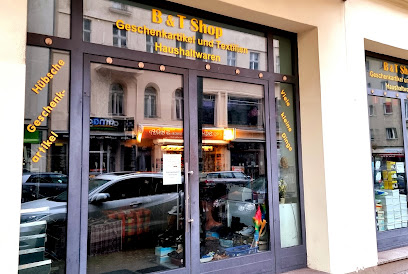
Essential bars & hidden hideouts
KLO Berlin
Experience the best of Berlin's nightlife at KLO, a vibrant gastropub known for craft beers, innovative cocktails, and delicious pub fare.

Paris Bar
Savor the essence of France at Paris Bar, a chic dining and nightlife destination in Berlin's vibrant Charlottenburg-Wilmersdorf.
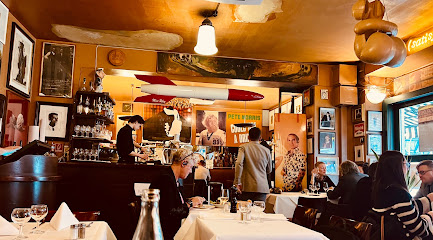
Hildegard Bar
Discover the enchanting Hildegard Bar in Berlin, where innovative cocktails and a cozy ambiance await you for a memorable night out.
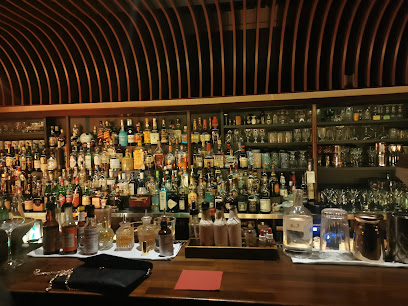
Van Gogh
Discover Van Gogh, a vibrant cocktail bar in Berlin's Charlottenburg, where innovative drinks and a lively atmosphere create unforgettable nights.
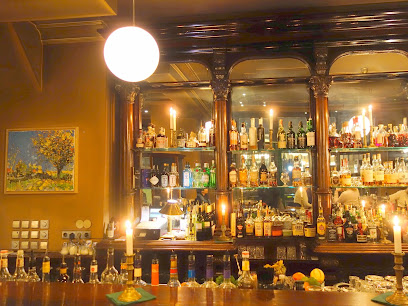
Galander Charlottenburg
Experience the vibrant cocktail culture of Berlin at Galander Charlottenburg, where creativity meets comfort in a stylish setting.
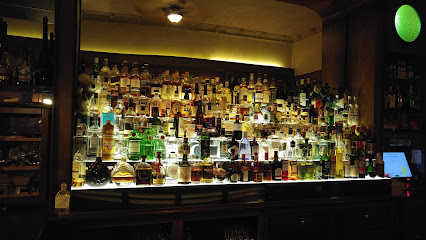
Gainsbourg Le Club - Bar Americain
Experience the vibrant American bar culture at Gainsbourg Le Club in Berlin, offering expertly crafted cocktails and an inviting atmosphere.
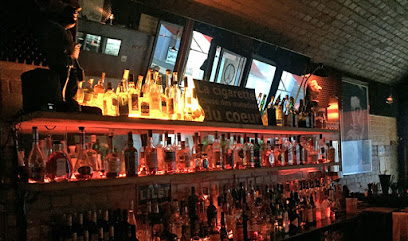
Bar Zentral
Experience Berlin's nightlife at Bar Zentral, a premier cocktail bar known for its exquisite drinks and vibrant atmosphere.
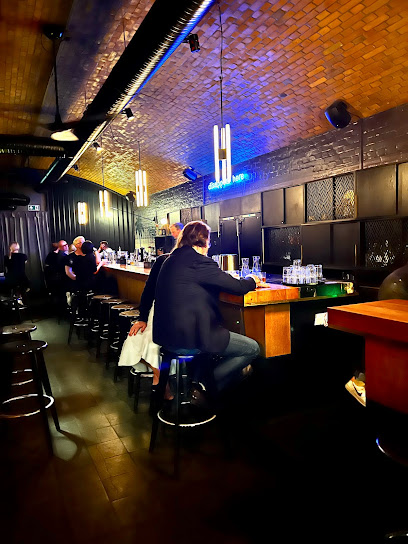
Lang Bar
Experience the elegance of Lang Bar in Berlin, a sophisticated venue for exquisite cocktails and a vibrant nightlife atmosphere.
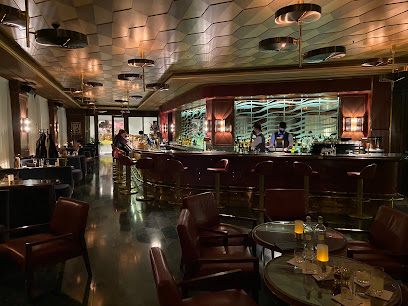
Blacklist Bar
Immerse yourself in Berlin's nightlife at Blacklist Bar, where expertly crafted cocktails and a vibrant atmosphere await you.
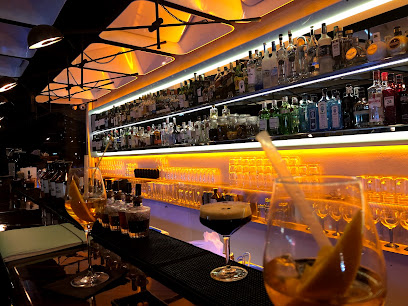
Bar am Steinplatz
Experience the elegance of Bar am Steinplatz in Berlin, where exquisite cocktails meet a vibrant atmosphere for an unforgettable night out.
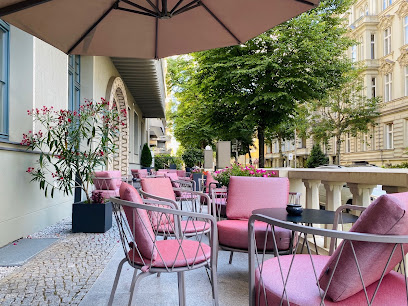
Local Phrases
-
- HelloHallo
[hah-loh] - GoodbyeAuf Wiedersehen
[owf vee-der-zay-en] - YesJa
[yah] - NoNein
[nine] - Please/You're welcomeBitte
[bit-teh] - Thank youDanke
[dahn-keh] - Excuse me/SorryEntschuldigung
[ent-shool-dee-gung] - How are you?Wie geht es Ihnen?
[vee gayt es een-en] - Fine. And you?Gut. Und dir?
[goot oont deer] - Do you speak English?Sprechen Sie Englisch?
[shpre-khen zee eng-leesh] - I don't understandIch verstehe nicht
[ikh fair-shtay-eh nikht]
- HelloHallo
-
- I'd like to see the menu, pleaseIch hätte gerne die Speisekarte, bitte
[ikh hah-te gair-ne dee shpy-zeh-kahr-teh, bit-teh] - I don't eat meatIch esse kein Fleisch
[ikh ess-se kine flysh] - Cheers!Prost!
[prohst] - I would like to pay, pleaseIch möchte bitte zahlen
[ikh merkht-eh bit-teh tsah-len]
- I'd like to see the menu, pleaseIch hätte gerne die Speisekarte, bitte
-
- Help!Hilfe!
[hil-feh] - Go away!Gehen Sie weg!
[geh-en zee vayg] - Call the Police!Rufen Sie die Polizei!
[roo-fen zee dee poh-lee-tsay] - Call a doctor!Rufen Sie einen Arzt!
[roo-fen zee i-nen artsht] - I'm lostIch habe mich verirrt
[ikh hah-beh meesh fayr-eert] - I'm illIch bin krank
[ikh been krunk]
- Help!Hilfe!
-
- I'd like to buy...Ich möchte kaufen...
[ikh merkht-eh kow-fen] - I'm just lookingIch schaue nur
[ikh shou-eh noor] - How much is it?Wie viel kostet es?
[vee feel kohs-tet es] - That's too expensiveDas ist zu teuer
[dahs ist tsoo toy-er] - Can you lower the price?Können Sie den Preis senken?
[kern-en zee den prees zen-ken]
- I'd like to buy...Ich möchte kaufen...
-
- What time is it?Wie spät ist es?
[vee shpayt ist es] - It's one o'clockEs ist ein Uhr
[es ist iyn oor] - Half past (10)halb elf
[halb elf] - MorningMorgen
[mohr-gen] - AfternoonNachmittag
[nahk-mit-tahk] - EveningAbend
[ah-bent] - YesterdayGestern
[geh-stern] - TodayHeute
[hoi-teh] - TomorrowMorgen
[mohr-gen] - 1eins
[ayns] - 2zwei
[tsvay] - 3drei
[dry] - 4vier
[feer] - 5fünf
[foonf] - 6sechs
[zeks] - 7sieben
[zee-ben] - 8acht
[ahkt] - 9neun
[noyn] - 10zehn
[tsayn]
- What time is it?Wie spät ist es?
-
- Where's a/the...?Wo ist ein/der...?
[voh ist iyn/dehr] - What's the address?Was ist die Adresse?
[vahs ist dee ah-drehs-seh] - Can you show me (on the map)?Können Sie mir das zeigen (auf der Karte)?
[kern-en zee meer dahs tsay-gen (owf dehr kar-teh)] - When's the next (bus)?Wann kommt der nächste (Bus)?
[vahn kohmt dehr naykhs-teh (boos)] - A ticket (to ....)Eine Fahrkarte (nach ...)
[ay-nuh fahr-kahr-teh (nahkh ...)]
- Where's a/the...?Wo ist ein/der...?
History of Charlottenburg
-
Charlottenburg's history began in the late 17th century when Sophie Charlotte, the wife of Elector Frederick III, commissioned the construction of a summer residence, which would later become Charlottenburg Palace. This area was initially a small village called Lietzow, but the establishment of the palace transformed it into a cultural and political center.
-
As Charlottenburg Palace became the main residence of the Prussian kings, the neighborhood flourished in the 18th century. The area saw the construction of beautiful gardens, baroque architecture, and the development of major institutions, making it a hub for art, culture, and politics in Prussia.
-
The 19th century brought significant changes to Charlottenburg with the industrial revolution. Factories and new residential areas emerged, accommodating the growing population drawn to the economic opportunities. This period marked the transformation of Charlottenburg from an aristocratic enclave to a vibrant urban center.
-
Charlottenburg became a focal point for the arts and culture during the early 20th century. The area was home to numerous theaters, art galleries, and the famous Berlin Secession movement, which promoted modern art. The renowned Deutsche Oper Berlin was established in the neighborhood, further solidifying its cultural significance.
-
Charlottenburg suffered extensive damage during World War II, with many historic buildings destroyed. Post-war reconstruction efforts sought to restore and modernize the area, balancing the preservation of its rich history with the demands of a growing city. Architectural styles from the 1950s and 1960s can still be seen throughout the neighborhood.
-
Today, Charlottenburg is known for its blend of historic charm and modern amenities. The neighborhood is home to the famous Kurfürstendamm shopping boulevard, the Berlin Zoo, and several museums. It remains a vibrant cultural hub while retaining its historical significance, making it a key destination in Berlin.
Charlottenburg Essentials
-
Charlottenburg is easily accessible from various neighborhoods in Berlin. The best way to reach Charlottenburg is by public transport. You can take the U-Bahn (subway) lines U7 and U2, which connect directly to the Charlottenburg station. S-Bahn trains, such as S3, S5, S7, and S9, also service the area with stops at the Charlottenburg S-Bahn station. For those coming from Berlin Hauptbahnhof (main train station), it’s a short ride on the S-Bahn or a 20-minute tram ride on the M45 to reach Charlottenburg.
-
Charlottenburg is well-connected by public transport. The U-Bahn and S-Bahn stations provide efficient access to other parts of Berlin. Buses, including lines 104, 109, and 218, also serve the area. Biking is a popular option, with many bike rental stations available. The neighborhood is bike-friendly, and cycling along the Spree River or through the beautiful parks is highly recommended.
-
Charlottenburg is generally a safe neighborhood for tourists. However, like any major city, it is wise to remain vigilant, especially in crowded areas. There are no specific high-crime areas targeting tourists, but it’s advisable to exercise caution around the areas with nightlife, such as outside bars and clubs, particularly late at night. Avoid isolated streets after dark.
-
In case of emergency, dial 112 for medical assistance or 110 for police assistance. Emergency services in Berlin are reliable and respond promptly. For non-emergency situations, visit the nearest police station. Pharmacies are also widely available in Charlottenburg for minor health issues, and many have late-night hours.
-
Fashion: Do dress comfortably and appropriately for the weather. Berliners tend to dress casually but stylishly. Don’t wear overly revealing clothing in public spaces, especially when visiting churches. Religion: Do respect local customs. When visiting churches, modest dress is appreciated. Public Transport: Do validate your ticket before boarding. Don’t eat or drink on public transport as it is frowned upon. Greetings: Do greet locals with a friendly 'Hallo' or 'Guten Tag.' A firm handshake is common. Eating & Drinking: Do try local cuisine at restaurants and cafés. Don’t waste food; it’s considered impolite to leave a significant amount uneaten.
-
To experience Charlottenburg like a local, explore the charming streets around the Charlottenburg Palace and visit the nearby markets, such as the Wochenmarkt on the Wilmersdorfer Straße for fresh produce and local delicacies. Try to engage with locals in cafés or parks, as they are often open to sharing recommendations. Don’t miss the chance to relax in the beautiful gardens of Charlottenburg Palace, which are free to enter. For unique experiences, check out local art galleries and theaters showcasing Berlin’s vibrant culture.
Trending Landmarks in Charlottenburg
-
Charlottenburg Palace
-
Schlossgarten Charlottenburg
-
Charlottenburg Palace - New Wing
-
Mausoleum in the Palace Garden Charlottenburg
-
Mittelpromenade der Schlossstraße am Schloss Charlottenburg
-
New pavilion in the palace garden of Charlottenburg
-
Schlossbrunnen
-
Denkmal des Großen Kurfürsten Friedrich Wilhelm
-
Obelisk
-
Eingangshäuschen
Nearby Cities to Charlottenburg
-
Things To Do in Potsdam
-
Things To Do in Szczecin
-
Things To Do in Leipzig
-
Things To Do in Dresden
-
Things To Do in Rostock
-
Things To Do in Lubeck
-
Things To Do in Erfurt
-
Things To Do in Hannover
-
Things To Do in Poznan
-
Things To Do in Hamburg
-
Things To Do in Karlovy Vary
-
Things To Do in Prague
-
Things To Do in Wroclaw
-
Things To Do in Plzeň
-
Things To Do in Bremen

